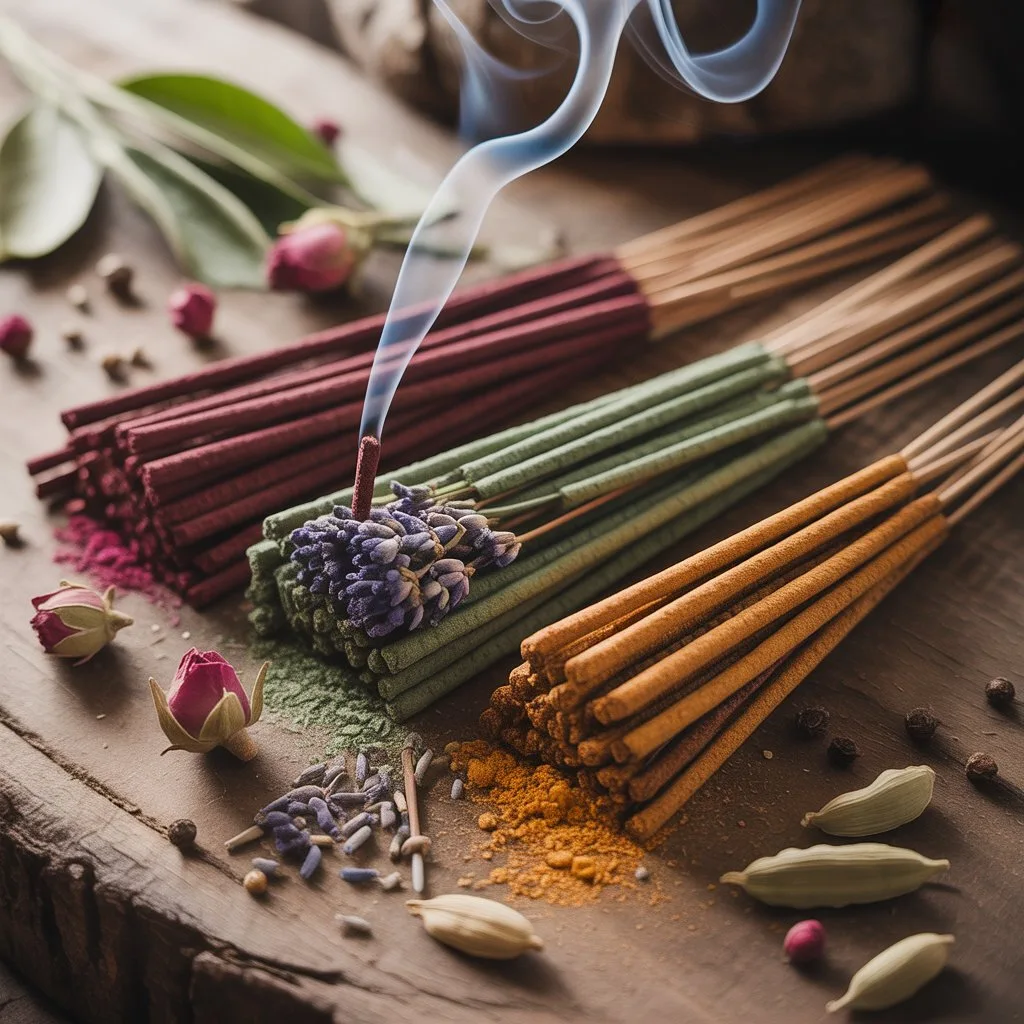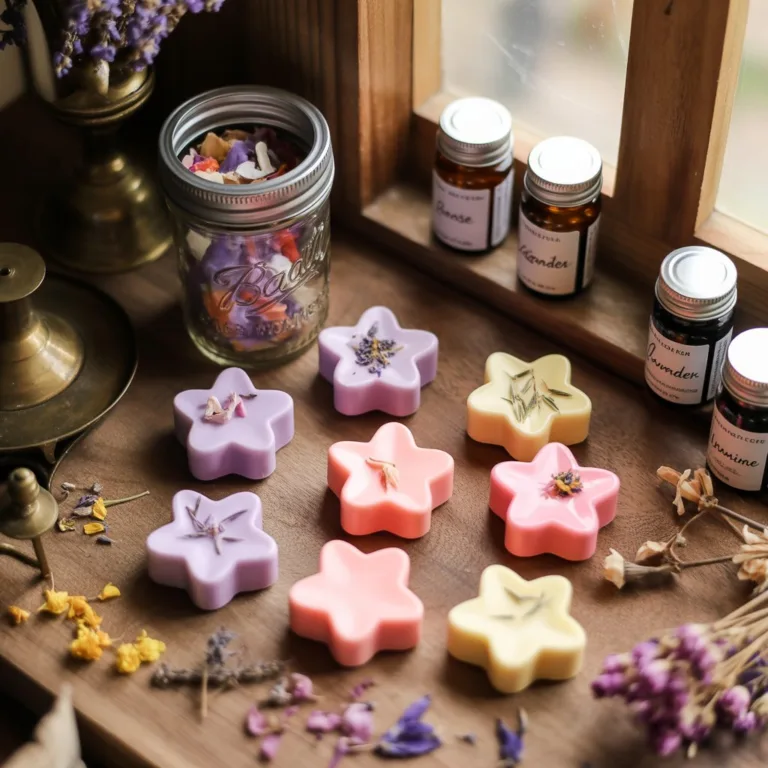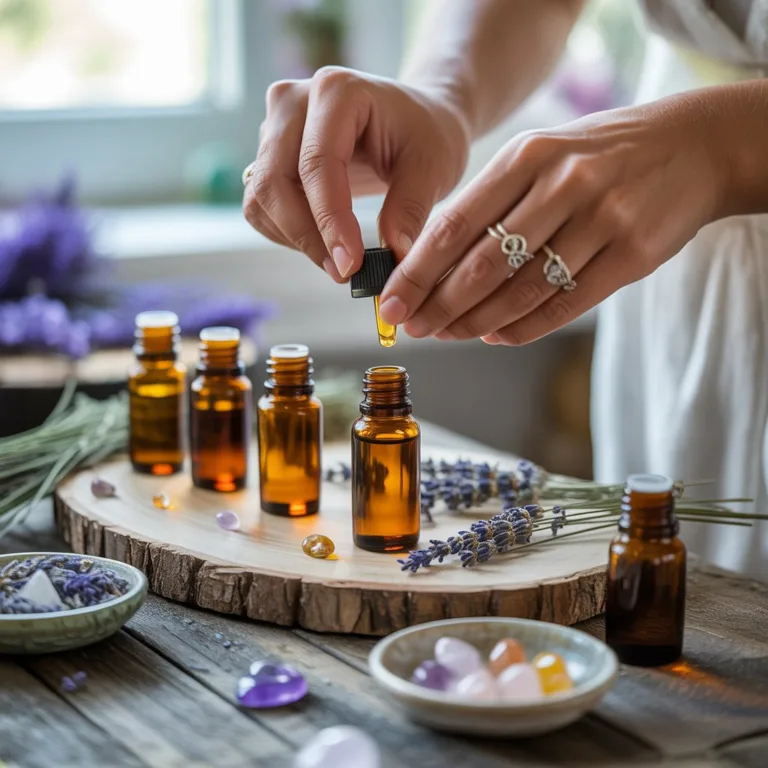There’s something deeply comforting about the scent of incense drifting through the air — calming, grounding, and instantly capable of transforming any space. But while store-bought incense sticks often rely on artificial fragrances and chemical binders, making natural incense sticks from herbs and spices lets you reclaim the purity of this ancient practice. It’s a craft that combines nature, mindfulness, and creativity in one beautifully aromatic form.

Creating your own incense connects you to centuries-old traditions, from temple rituals in Asia to herbal practices in ancient Europe and the Americas. The process of blending natural ingredients into a slow-burning stick is both artistic and deeply sustainable — a conscious alternative to synthetic products that often pollute indoor air.
The Art and Origins of Natural Incense
Incense has been used for thousands of years in spiritual, medicinal, and daily life contexts. Ancient Egyptians burned aromatic resins during religious ceremonies; in India and China, incense symbolized communication with the divine; and in Japan, “Kōdō” (the way of fragrance) evolved into a meditative art form.
Traditionally, incense was made entirely from natural plant materials — herbs, resins, wood powders, roots, and flowers — each carrying unique scents and properties. Over time, industrial production replaced many of these ingredients with artificial chemicals to cut costs. By returning to natural sources, you not only honor the tradition but also protect your health and the environment.
Why Choose Natural Incense
Natural incense sticks are free from synthetic fragrances, petroleum-based binders, and artificial colorants. When you make them yourself, you control every ingredient, ensuring that what you breathe is truly clean.
Benefits include:
- Non-toxic smoke: Avoiding harmful additives means safer air quality at home.
- Sustainable sourcing: Herbs and spices can be homegrown or ethically collected.
- Aromatherapy benefits: Natural ingredients maintain their therapeutic properties.
- Custom blends: You can tailor scents for relaxation, energy, or meditation.
- Creative expression: Crafting incense blends connects you to nature and tradition.
Essential Ingredients for Natural Incense Sticks
The foundation of every incense stick lies in the careful balance between fragrance, binder, and base. Each plays a crucial role in how the stick burns and releases its scent.
Fragrant Ingredients
These are the heart of your incense — herbs, flowers, woods, and spices that produce the aroma.
Common natural fragrance sources include:
- Herbs: Sage, lavender, rosemary, mint, basil, lemongrass
- Flowers: Rose petals, jasmine, chamomile, marigold
- Spices: Cinnamon, clove, cardamom, star anise, nutmeg
- Resins: Frankincense, myrrh, copal, benzoin
- Woods: Sandalwood, cedarwood, agarwood, palo santo
You can use these ingredients dried and finely ground. Combining multiple scents allows you to create unique blends — for example, lavender and sandalwood for calmness, or rosemary and lemon peel for focus.
Natural Binders
Binders hold the powdered ingredients together and help the stick burn evenly. Synthetic binders are often petroleum-based, but natural alternatives work just as well.
The most common natural binder is Makko powder (from the bark of the Machilus thunbergii tree). It’s odorless, combustible, and forms a smooth paste when mixed with water. Other options include:
- Guar gum powder (plant-based thickener)
- Tragacanth gum (natural resin from the Astragalus plant)
- Ground sandalwood or cinnamon powder (for subtle natural fragrance and binding)
Base Materials
The base affects the burn rate and helps distribute the scent evenly.
- Charcoal powder: Ensures even burning but adds a smoky tone.
- Wood powders: Sandalwood, cedar, or pine powders give structure and scent.
- Herbal powders: Finely ground leaves can serve as light fillers.
Gathering and Preparing Ingredients
To make your incense truly sustainable, use locally sourced herbs or those you’ve grown yourself. Dry them thoroughly before grinding to prevent mold. The finer the powder, the smoother your incense will burn.
For grinding, use a mortar and pestle or an electric grinder reserved for herbs (avoid ones used for food). Strain powders through a fine mesh to remove large particles.
If you want to experiment, start by keeping a small notebook of your blends — record proportions and results to refine your recipes over time.
Balancing the Incense Mixture
A well-balanced incense stick needs harmony between scent, base, and binder. A typical ratio might be:
- 3 parts fragrant materials
- 2 parts base (wood or charcoal)
- 1 part binder
Add small amounts of water gradually until the mixture feels like soft dough — pliable but not sticky. If it’s too dry, the incense will crack; too wet, and it won’t hold its shape.
You can also infuse the water with essential oils, floral water, or natural hydrosols for added aroma.
Forming the Incense Sticks
Traditional incense sticks are rolled by hand or pressed into molds. To make them at home:
- Hand-Rolled Method: Take a bamboo stick (or go stickless for cone incense). Roll it gently in your incense paste until evenly coated, then smooth with your fingers.
- Molded Sticks: Press the dough into a small mold, remove carefully, and lay flat to dry.
- Stickless Coils or Cones: Shape small cones or spirals for compact burning.
Place finished sticks on a mesh or tray and allow them to dry slowly in a cool, shaded area for at least a week. Avoid direct sunlight — it can cause cracking or uneven drying.
Enhancing the Fragrance with Natural Additions
You can elevate the depth of your incense by adding layers of scent from natural ingredients:
- Citrus zest for brightness
- Dried flowers for softness and color
- Powdered roots like vetiver or patchouli for grounding tones
- Essential oils for complex aromas (use sparingly — a few drops are enough)
These additions help you craft signature blends that reflect your mood or purpose.
Sustainable Practices in Incense Making
Natural incense aligns beautifully with sustainable living. Every aspect — from material selection to packaging — can reflect environmental responsibility.
- Reuse containers for storing your incense powders.
- Compost leftover herbs and trimmings.
- Package with recycled paper or cloth bags instead of plastic.
- Use local plants to minimize environmental footprint.
This approach keeps the entire process eco-conscious while enhancing the authenticity of your craft.
Symbolic and Therapeutic Uses
Natural incense is more than fragrance; it’s a bridge between sensory pleasure and mindfulness. Different herbs and spices carry symbolic meanings and emotional effects:
- Lavender: peace and relaxation
- Cinnamon: energy and protection
- Clove: purification and grounding
- Sage: cleansing and renewal
- Frankincense: spiritual focus and meditation
Experiment with combinations that resonate with your intention — whether to energize, calm, purify, or inspire.
Teaching and Sharing the Craft
Making incense can also be an excellent educational or community activity. It teaches chemistry (through combustion and binding), ecology (through sustainable harvesting), and mindfulness (through sensory awareness).
Workshops or home projects can engage students in exploring natural scents, cultural traditions, and eco-friendly creativity. Sharing your handmade incense also spreads awareness about alternatives to synthetic products, inspiring others toward natural living.
The Ritual of Creation
Crafting incense from herbs and spices can be a meditative ritual in itself. Grinding the herbs, mixing the paste, and shaping each stick encourage slow, intentional movement — a rare kind of mindfulness in today’s fast-paced world.
When you light a stick that you’ve made by hand, you participate in a full circle: nature offering its scent, human hands shaping it, and the element of fire releasing it back into the air. It’s a gentle reminder that sustainability and spirituality can coexist beautifully in everyday actions.
Handmade natural incense transforms simple plants and spices into aromatic art — grounding us, soothing us, and reconnecting us to the rhythms of the earth.

Lucas Hartman is a DIY enthusiast and sustainability advocate focused on natural crafts and eco-friendly home décor. With a background in arts and design, Lucas creates tutorials that help families and hobbyists transform everyday recycled or organic materials into beautiful, functional projects.



